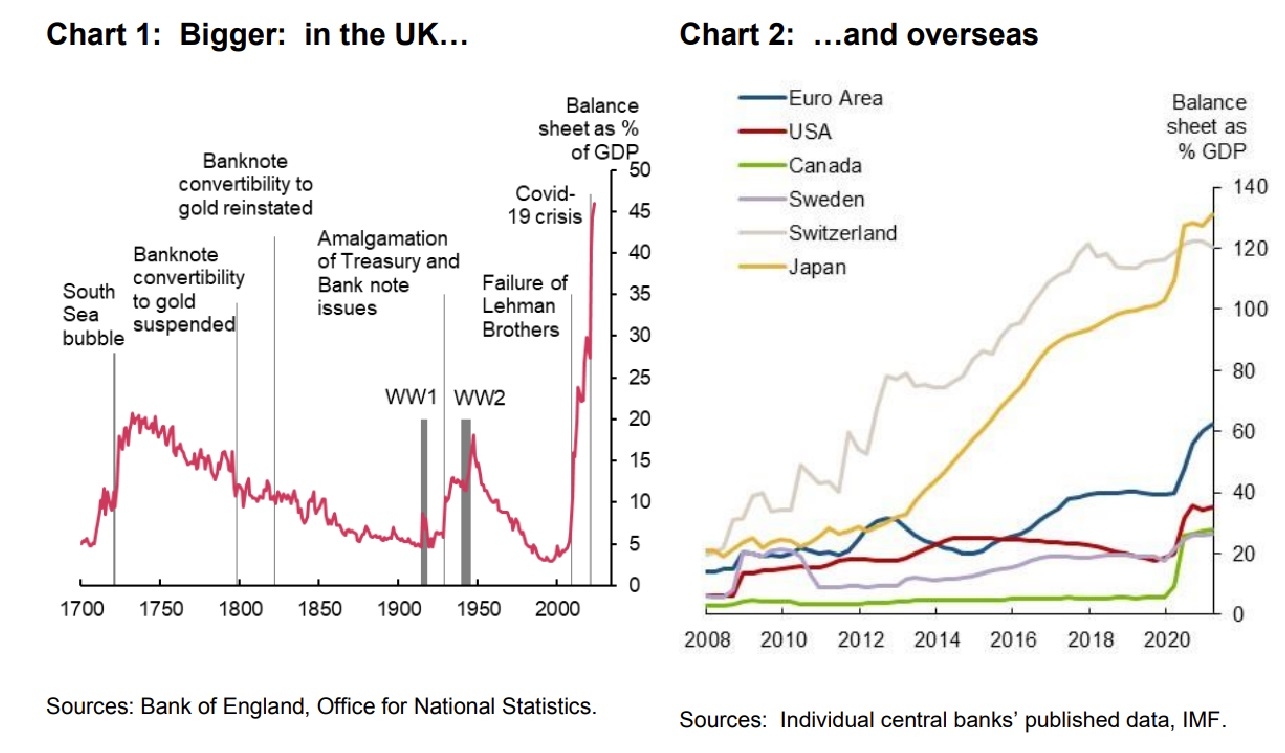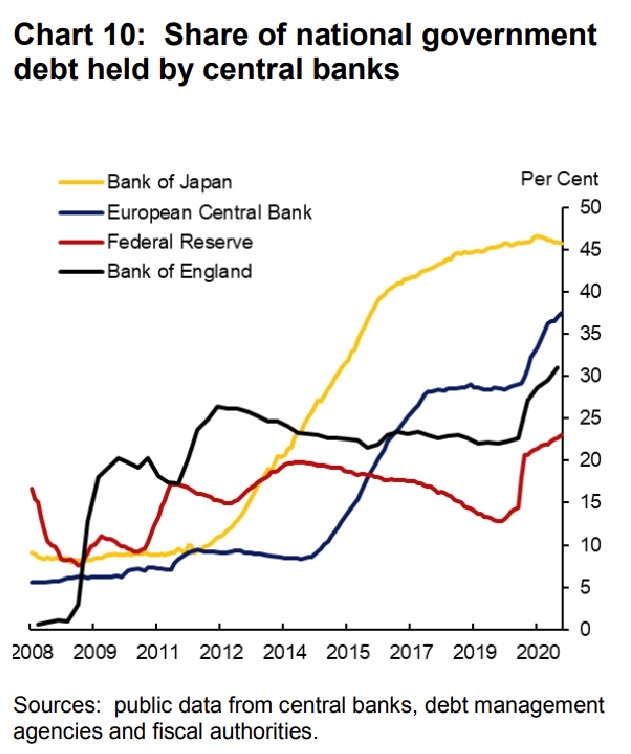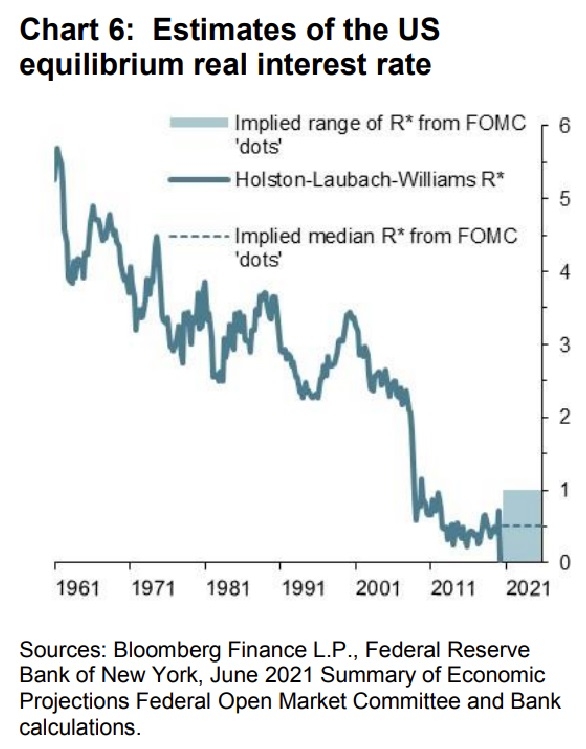Il messaggio di Andrew Hauser della BOE è chiaro: “The central bank balance sheets of the future will be very different to those we knew at the start of the millennium. They will be structurally larger, even after current QE programmes unwind – as central banks meet a bigger share of the structurally higher demand for liquidity; and contemplate possible Central Bank Digital Currencies. And they will be more variable – as lower global interest rates and a broader liquidity insurance toolkit mean balance sheets play a more active countercyclical role.” Cosa è possibile osservare oggi, rispetto a quello che è successo in passato e sulle aspettative presenti?
1) Siamo a livelli record di asset su gdp per molte banche centrali 
3) Palese è il ritorno alla monetizzazione dei debiti da parte delle banche centrali
2) I tassi reali di equilibrio americani sono vicini al limite inferiore possibile (ELB: Effective Lower Bound)
Hauser nelle proprie conclusion asserisce: “Central banks cannot shirk their responsibilities to maintain monetary and financial stability. But they do have choices about how to do so – and I’ve suggested three principles to help ensure they do so in ways that help markets function well and safely, in the service of the wider economy. By gathering regular and detailed intelligence on market structures. By placing the burden of proof on explaining why financial markets cannot do it better. And, where intervention is needed, by setting clear ex ante expectations, minimising predictable adverse effects, and developing clear exit strategies”.
Tutti gli economisti e uomini di mercato puntano ad un tapering nei prossimi anni, ad un ritorno alla normalità ma, il new (ab)Normal sembra una espansione dei bilanci delle banche centrali all’infinito, i mercati finanziari verrebbero annichiliti e praticamente sostituiti, un pericolo non da poco se non si trovasse un giusto equilibrio e buon funzionamento dell’ingranaggio tra economia reale e finanziaria.
